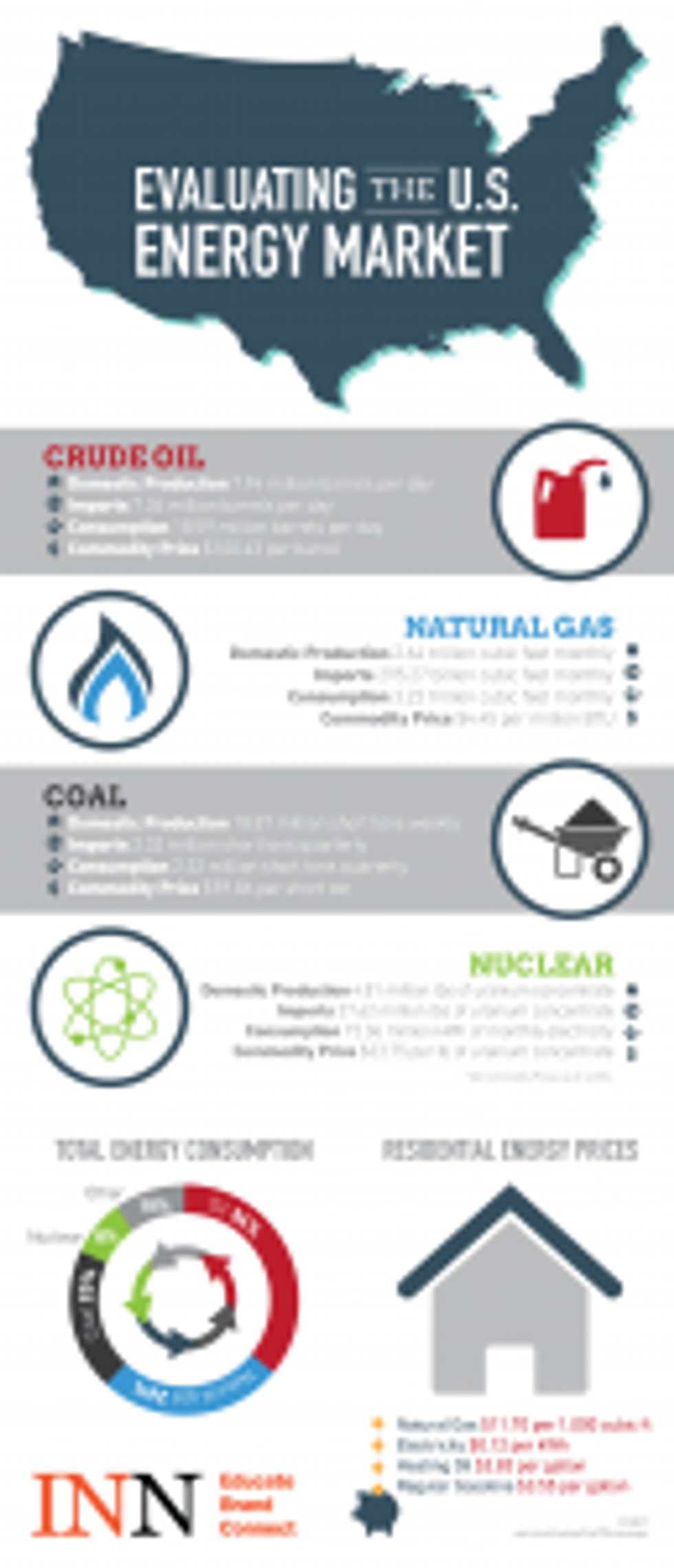Here is a brief look at energy sources in the United States.
In the United States, energy comes from a variety of sources, the combinations and proportions of which are constantly changing. For instance, over the course of the last decade, the US has increased its production of oil and natural gas. Another factor that impacts the energy sector in the US is commodities prices, which unsurprisingly can define which source of energy is more economic for both commercial and residential energy consumption.
When looking at which energy source takes up the lion’s share of the US energy market, oil, with 36 percent, takes the top spot. It is closely followed by natural gas, which accounts for 26 percent. Trailing behind oil and gas is coal, with a 20-percent share of the energy market. The US also has other energy sources, like renewables, which make up 10 percent of consumption, while nuclear power accounts for a mere 8 percent of total US energy consumption.
As demonstrated by residential energy prices, the market for each of these forms of energy in the US is profitable. For example, natural gas costs $11.70 per 1,000 cubic feet, and heating oil costs $3.83 per gallon. Electricity comes in at $0.12 per kilowatt hour, and according to the World Nuclear Association, nuclear power is priced somewhere around $35 to $40 per megawatt hour.
Those prices demonstrate the impact of the oil and natural gas boom in the US, which has been brought on by new technologies like fracking. The US now produces 2.64 trillion cubic feet of natural gas per month, along with 7.94 million barrels of crude oil per day.
Though the US is less active in the production of energy sources like coal and nuclear power, it still plays a role in those markets. Domestic coal production amounts to 18.87 million short tons weekly, and the US produces 4.81 million pounds of uranium concentrate a year. Demand for nuclear energy rests at about 50 million pounds per year.






